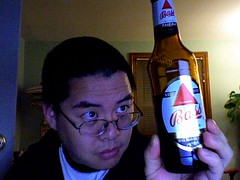What I’ll Be Sharing at PodCamp DC
A few people have wondered what I’ll be sharing at PodCamp DC. I’ve got two sessions blocked out, plus possibly a panel – we’ll see about the last part.
Session 1:
New Media Marketing: How New Media Powers Business. 10 AM Saturday. I’ve been working on refining this ever-evolving presentation which now includes aspects of sales, internet marketing, search engine optimization, and just about everything else, all linked to a framework that you can take home and apply to any product, service, or organization.
If you’re thinking about using blogging, podcasting, social networks, or other new media tools to promote the ideas you care about, this session is for you.
Session 2:
Power Your Personal Network with LinkedIn. 3 PM Saturday. I’ll be co-presenting with Dan Williams, another LinkedIn Power User, on how to use LinkedIn to power your networking skills. This is a session by request from a few participants who’d asked early if there was going to be something about LinkedIn. I’ll be sharing a few of my tips about using the service, what it’s good for, and how to help you build your personal brand with it, including simple but effective techniques you can start using immediately for better results.
Dan’s got even more juice to add to the discussion as the person on LinkedIn ranked #1 in the country for recommendations. He’ll talk about his LinkedIn stories and power tips as well.
Session 3:
Speed Mentoring: Promoting Your Political Ideas in Social Media. 4 PM Saturday. This is an idea based on Dan Patterson‘s PodCamp NYC panel about how social media is changing the political landscape. In this session, I’d love to put a bunch of us together and workshop either a candidate or cause’s social media efforts, showing where social media can optimize a campaign’s efforts to share and spread ideas.
It seemed funny to have a political discussion panel at PodCamp NYC and not have one in the heart of politics itself, Washington, DC.
This is not a discussion on politics itself – this is a collaboration, a brainstorming session, to help those individuals working at organizations with causes to power up their efforts. The ideas and techniques we discuss should apply equally to all parties, beliefs, and campaigns.
I’m unsure whether or not uStream or other services will be available for the distance aspect, as I don’t know what the venue’s Internet access will be like, so if you can make it in person, great!
If you plan on attending any of the sessions at PodCamp DC that I’ll be participating in, please feel free to ask questions in advance of the event itself – just leave comments here!
Did you enjoy this blog post? If so, please subscribe right now!
Get this and other great articles from the source at www.ChristopherSPenn.com




